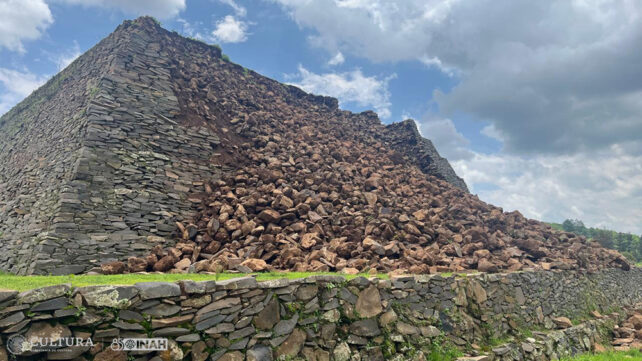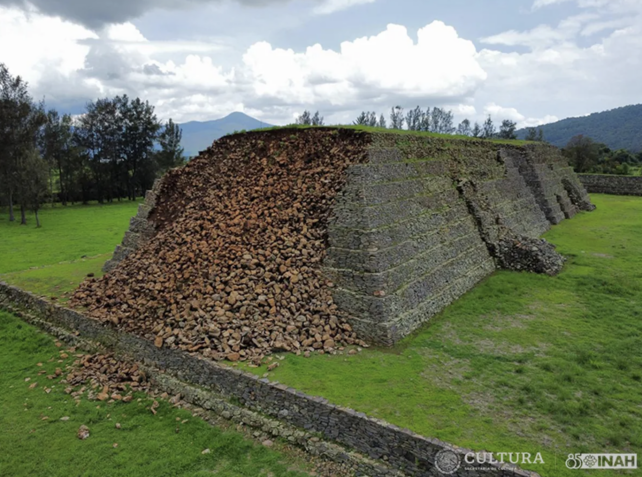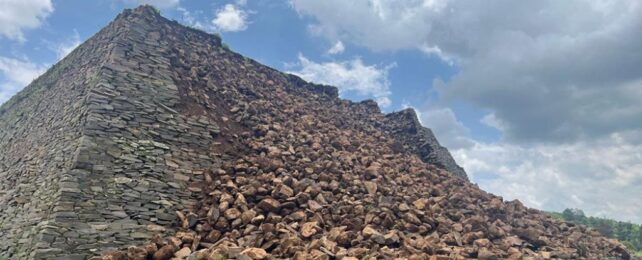Extreme weather events and rising seas are putting precious heritage sites around the world in harm's way.
A stone pyramid in Mexico is the latest to succumb to an increasingly chaotic global climate. On the night of July 29, the 15-meter-high (roughly 50-foot-high) square monument located in the state of Michoacán suddenly slumped under the pressure of incessant rain, its south wall crumbling into a pile of rubble.
The pyramid was once one of the best-preserved monuments of the Michoacán Kingdom civilization. It is located at Ihuatzio, a remarkably preserved archaeological site that contains one other pyramid, a tower or fortress, and some tombs.
It was first occupied 1,100 years ago by indigenous Nahuatl-speaking groups. Later, it became the headquarters of the P'urhépechas people, the only empire the Aztecs couldn't conquer. The culture still thrives to this day.
Only one of the pyramids at the site has been damaged, but personnel from Mexico's National Institute of Anthropology and History (INAH) say that at least six of its 'stepped bodies' are in disrepair, including the outer wall, and the core and retaining wall.
They blame the extreme weather events of recent weeks.

In July, the peak of the Northern Hemisphere summer, heavy rainfall and thunderstorms battered much of Mexico. This came after the worst drought in the nation in 30 years, when rain became so scarce, several lakes dried up completely.
"The high temperatures, previously recorded in the area, and the consequent drought caused cracks that favored the filtration of water into the interior of the pre-Hispanic building," said an INAH statement.
From there, collapse became all but inevitable. Officials are now focused on repairing the structure of the building "in favor of the cultural heritage of Mexicans."
It's the job of archaeologists to study human behavior in times gone by, but inevitably, their work is also impacted by current human activities.
Extreme weather and rising seas, driven by human-caused climate change, are proving to be a serious nuisance for important sites of bygone cultures.
Recently, archaeologists found that ancient cave paintings in oceania are deteriorating with accelerating climate changes.
And just this year, a study on cultural heritage building materials in Europe and Mexico found when precipitation increases substantially, it puts these buildings at risk of damage.

According to Tariakuiri Alvarez, who identifies as a living member of the P'urhépecha tribe, his ancestors would have interpreted the crumbling of the pyramid at Ihuatzio as a "bad omen."
In a recent Facebook post Alvarez said that before the arrival of foreign conquerors in Mexico, something similar happened, and it was because the gods were "displeased".
Just days before the pyramid in Mexico tumbled down, Utah's iconic 'Double Arch' also caved in, probably due to changing water levels and erosion.
Heritage sites like these are priceless places that humans wish to preserve for future generations. Watching them collapse from a climate that has been drastically altered by our own behavior is displeasing to watch, and not just for immortals.
